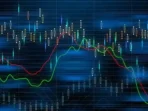In the vast and intricate world of foreign exchange (forex) trading, the deployment of automated trading systems, often referred to as forex robots, has become increasingly prevalent. These algorithms are designed to execute trades on behalf of traders, utilizing predefined criteria and rules to enter and exit positions in the forex market. However, while forex robots offer the promise of efficiency and objectivity, their performance is profoundly influenced by the underlying market microstructure.
What is Market Microstructure?
Market microstructure refers to the organizational and functional aspects of financial markets that determine how prices are formed and transactions are executed. It encompasses various elements such as order types, market liquidity, order flow, trading venues, and market participants’ behavior. Understanding market microstructure is crucial for devising effective trading strategies, including those implemented by forex robots.
Liquidity and Order Execution
One of the critical components of market microstructure is liquidity, which represents the ease with which assets can be bought or sold without causing significant price movements. In forex trading, liquidity can vary significantly depending on the currency pair being traded and the time of day. Forex robots must adapt to varying liquidity conditions to execute trades efficiently. Failure to do so can lead to slippage, where the executed price differs from the intended price, thereby impacting performance.
Order Flow Dynamics
The dynamics of order flow, i.e., the influx of buy and sell orders into the market, also play a crucial role in forex robot performance. Sudden surges in order flow, often driven by economic news releases or geopolitical events, can result in increased volatility and rapid price movements. Forex robots must possess robust risk management mechanisms to navigate such volatile conditions successfully. Moreover, they may need to adjust their trading parameters or temporarily suspend trading to avoid excessive losses.
Market Impact of Trading Strategies
Forex robot implement various trading strategies, ranging from trend-following to mean-reversion and arbitrage. The efficacy of these strategies is heavily influenced by market microstructure. For instance, trend-following strategies may perform well in markets characterized by strong trends and smooth price movements but struggle in choppy or range-bound conditions. Conversely, mean-reversion strategies may thrive in range-bound markets but incur losses during trending phases. Understanding the prevailing market microstructure is essential for selecting the appropriate trading strategy and parameters for a forex robot.
High-Frequency Trading (HFT) and Latency
In recent years, the rise of high-frequency trading (HFT) has transformed the landscape of forex markets. HFT firms leverage cutting-edge technology and low-latency trading infrastructure to execute trades at lightning speed, often within microseconds. This intense competition for speed has led to the proliferation of algorithmic trading strategies designed to exploit fleeting opportunities in the market. Forex robots operating in this environment must contend with latency issues and ensure that their order execution is swift and precise to remain competitive.
Regulatory Considerations
Market microstructure is not solely determined by economic factors but also by regulatory policies and market regulations. Regulatory changes, such as alterations to margin requirements or the introduction of transaction taxes, can profoundly impact market liquidity and trading behavior. Forex robots must stay abreast of regulatory developments and adapt their strategies accordingly to mitigate regulatory risks and ensure compliance.
Conclusion
In conclusion, market microstructure exerts a significant influence on the performance of forex robots. Factors such as liquidity, order flow dynamics, trading strategies, latency, and regulatory considerations collectively shape the trading environment in which forex robots operate. To enhance their performance and profitability, forex traders and developers must possess a deep understanding of market microstructure and its implications for algorithmic trading. By incorporating this knowledge into the design and implementation of forex robots, traders can navigate the complexities of the forex market more effectively and achieve their trading objectives with greater consistency.







